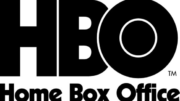Hard to believe it’s been 10 years. This was the day back in 2009 when almost all analog broadcasting stopped in the United States. It was a long and difficult project that took most of the decade, but in the end it opened the door to higher-quality picture and sound and even to future data services. Are you ready to relive the highlights?
It all started back in 1996
The move to digital broadcasting started with the Telecommunications Act of 1996. This law changed the rules for broadcasting. It was not the first time, in fact every technological change in broadcasting has taken an act of Congress.
Digital TV wasn’t just designed to give customers better picture and sound. Although HDTV technology had been around for nearly a decade by the mid-90s, the drive for digital broadcasting had a lot to do with the growing number of cell phones and other services.
Compared to today’s tech, old-school analog broadcasting is sloppy. It’s hard to control the signal and that’s why rules were in place that no two stations could be right next to each other, even in two adjoining markets. In other words, you could have channels 7 and 9, but you couldn’t have channels 8 and 9 because they would interfere with each other. Exceptions were made in certain cases and where the gaps in channels were exceptionally big. The need for “white space” meant that even in markets with only ten channels, you often needed 30-40 frequencies.
Changing TV to all-digital meant that channels could be packed more closely. That meant that there would be a block of unused TV channels from 52-83 that could be allocated. That’s where cell phone signals and other first responder frequencies live today.
The goal of digital TV
Digital TV not only offered more space for other services, but it was planned from the beginning to offer advanced services that weren’t available to TV watchers in the 20th century. These may seem like old hat today, but this list represents a revolution:
-
Choice of square or wide aspect ratios
-
Different resolutions ranging from 480 pixels (similar to analog TV) to 1080 pixels
-
Choice of scan rate between progressive (clearer motion) and interlaced (more picture data)
-
Choice to add multiple TV programs on the same 5MHz channel
All together, the number of available program streams increased from about 20 to well over 100 and that was intended to create more opportunity for local programming. It all sounded great, but it was going to cost money.
Congress puts money where its mouth is
In order to make the digital transition happen by its target date of December 31, 2006, the government offered financial aid for stations that operated two different transmitters. It offered coupons to regular folks so that they could adapt their old TVs to the new standards. And, trade deals were struck with Asian countries that made the flat panels that everyone wanted to use for digital TV.
It’s almost impossible to imagine the level of cooperation and forethought that the Congress showed in the 1990s and that’s one reason why I’m still skeptical that we’ll see another digital transition anytime soon.
2006? Didn’t happen
Broadcasters weren’t going to be ready by 2006. Converter boxes were too expensive and still hard to get. That was clear by 2005, when Congress acted to move the transition initially to December 31, 2008 and then to February 17, 2009.
Although 2/17/09 was the date most broadcasters actually did transition, the real cutoff date for most analog broadcasters didn’t come until June of 2009. Under pressure from the people and from some broadcasters, the President signed the DTV Delay Act, another act of Congress, to delay the full transition until June 12, 2009. However by the time the bill became law many stations already had their transitions set for February 17. It was the biggest transition date, when well over 1/3 of local broadcasters shut off their analog feeds, with the remainder trickling in over the course of the next few months.
Ten years later…
Today we talk about ATSC 3.0, which is proposed as the next digital transition. To date, however, there has been no act of Congress authorizing this transition. The FCC and broadcast groups would like to tell you that the new transition will start in 2020 and that it will be complete by 2025. Forgive me if I’m a little wary of that prediction. If you look at the history, it took 13 years and three acts of Congress before the digital transition was complete. It took a converter box program that lasted four years and cost millions and millions of dollars.
Even though I try not to get political in this blog, I think it’s just common sense to think that the next transition won’t work its way through Congress that quickly.
Can’t we just bypass Congress?
The current laws on the books date back to the 1930s. They establish the idea that the broadcast spectrum belongs to the people. It’s sort of like the public parks. It’s there for everyone to enjoy. The law lays it out. Every radio and television must be able to receive every broadcast on a public frequency. Right now the FCC is currently allowing test broadcasts using ATSC 3.0. However, they’ve mandated that the content must be the same as regular digital broadcasts. Something will have to change before a full transition takes place.
There may not be a need for a converter box program if tuners are cheap enough. Maybe, it may be possible to update the tuner in software with relatively new televisions. But I doubt that would sit will with millions of people who don’t buy new TVs every three years. I think that there would have to be some congressional action, and folks, I just don’t see it.
But in the meantime, let’s take one moment and celebrate. Let’s remember a time when the government worked and brought us the TV watching we have today.





